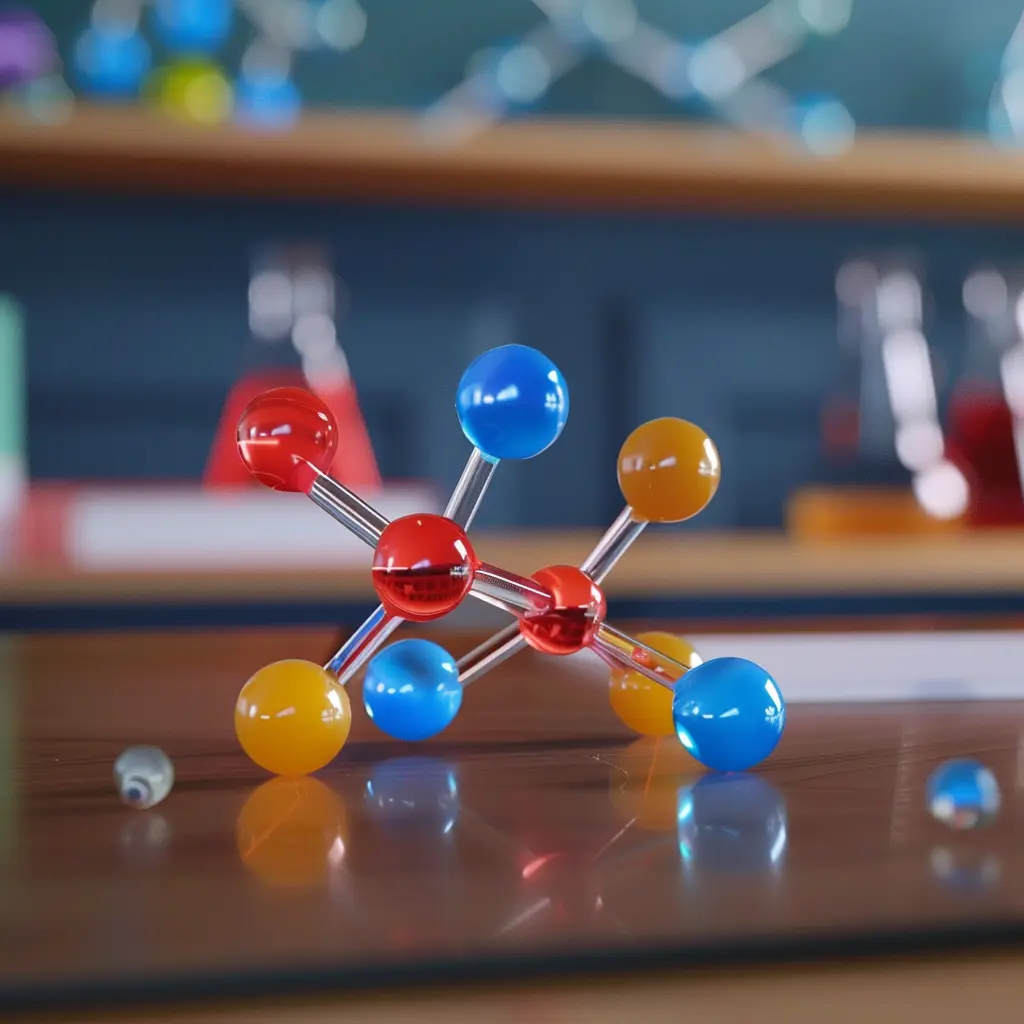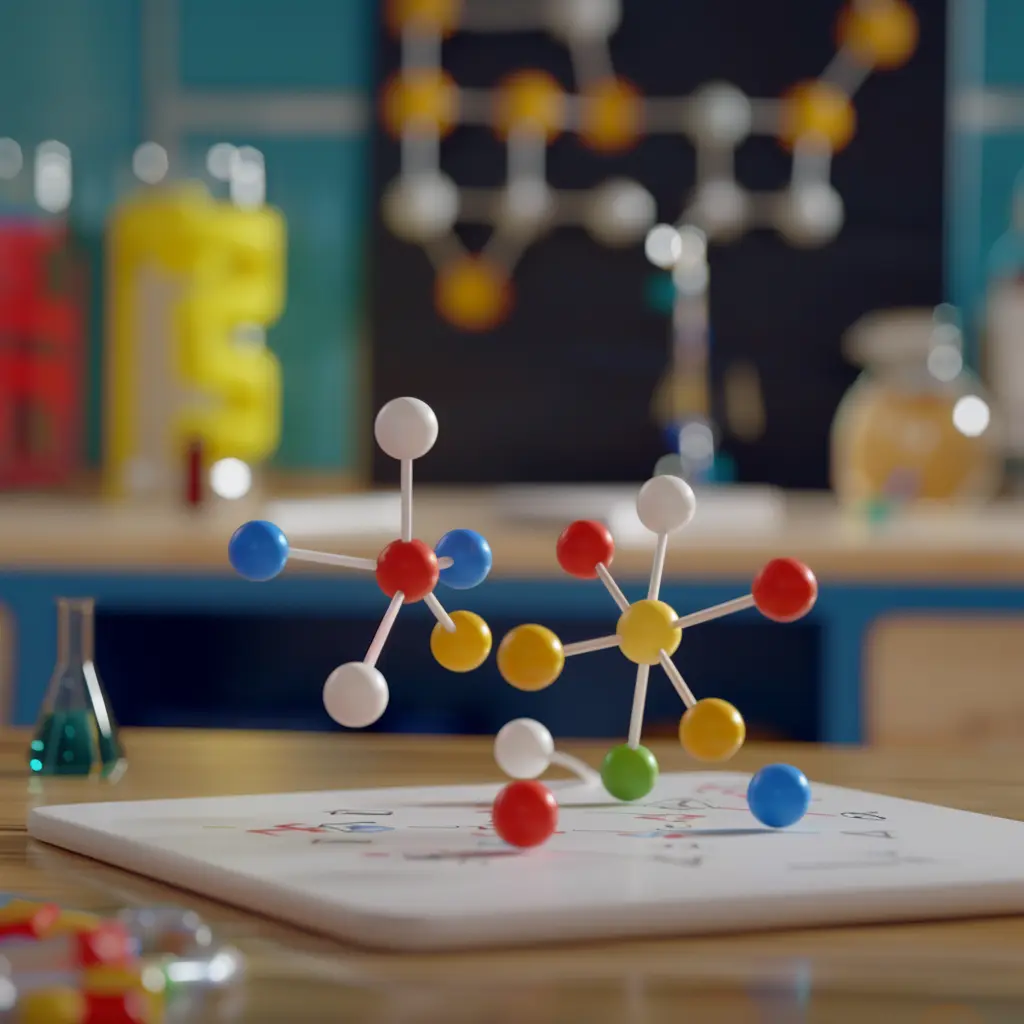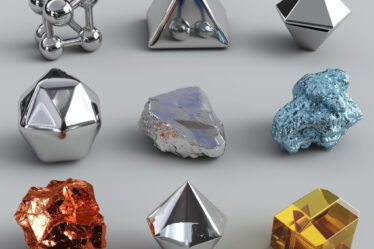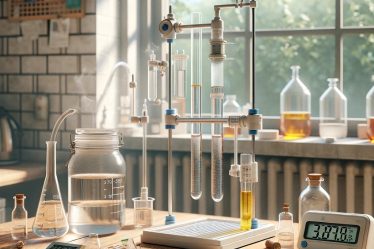
Water, known chemically as $H_2O$, is an example of a molecule—a combination of atoms bonded to form a stable unit.
Molecules are found everywhere—from the oxygen ($O_2$) in the atmosphere to the glucose ($C_6H_{12}O_6$) that fuels our cells—making them central to chemistry and life itself.
We’ll start by looking at what a molecule is and how it compares to atoms and compounds. You’ll see how molecular formulas explain the composition of substances and how molecular bonds hold atoms together. As we go, we’ll cover relative atomic mass and molecular mass, breaking these terms into clear examples.
Molecule: Quick Summary
Do you just need the basics? Here’s a simple explanation of a molecule, relative atomic mass, and other chemistry terms:
🟠 Molecule: A stable unit formed by two or more atoms bonded together, retaining the chemical properties of the substance.
🟠 Molecular Formula: Represents the exact number and types of atoms in a molecule, such as $H_2O$ for water or $C_6H_{12}O_6$ for glucose.
🟠 Relative Atomic Mass: The average mass of an atom compared to carbon-12, accounting for isotopic abundance, used to calculate molecular mass.
🟠 Homonuclear Molecules: Molecules like $O_2$ or $N_2$ that contain atoms of the same element.
🟠 Heteronuclear Molecules: Molecules such as $H_2O$ or $CO_2$ made of atoms from different elements.
🟠 Polarity: Describes the uneven distribution of charge in molecules, influencing solubility and chemical behavior.
🟠 Molecular Bonds: Covalent and ionic bonds connect atoms within a molecule, determining its structure and properties.
Struggling with molecules? Don’t worry. A tutor can explain it in a way that clicks for you. You can also find more useful topics in our Chemistry blogs.
What is a Molecule?
A molecule is the smallest unit of a chemical substance that retains all its physical and chemical properties. It consists of two or more atoms bonded together, forming a stable entity.
Atoms can be from the same element, creating homonuclear molecules like $O_2$ (oxygen gas), or from different elements, forming heteronuclear molecules like $H_2O$ (water).
Molecules are distinct from both isolated atoms and compounds:
- Atoms are single units of an element, such as a hydrogen atom ($H$).
- Compounds are specific types of molecules that contain atoms of different elements chemically bonded in fixed proportions.
Molecules range in size and complexity. Small molecules like $H_2$ (hydrogen gas) consist of just two atoms, while large biomolecules like proteins contain thousands of atoms arranged in intricate structures. Regardless of size, the atoms within a molecule are held together by chemical bonds, such as covalent or ionic bonds, creating a stable structure.
Molecules can exist in various states of matter, such as gases, liquids, and solids. For example, $H_2O$ remains the same molecule in its solid form (ice), liquid form (water), and gaseous form (steam), even though its physical state changes.
Examples of Molecules in Everyday Life
Molecules are all around us, forming the substances we encounter every day.
Simple Molecules:
- $H_2$ (hydrogen gas): A lightweight gas used in industrial processes.
- $O_2$ (oxygen gas): Essential for respiration in living organisms.
- $N_2$ (nitrogen gas): Makes up 78% of Earth’s atmosphere.
Complex Molecules:
- $H_2O$ (water): The molecule vital for life and biological processes.
- $C_6H_{12}O_6$ (glucose): A sugar molecule that provides energy for cells.
- Proteins: Large molecules made of amino acids responsible for countless biological functions.
Other examples include $CO_2$ (carbon dioxide), released during respiration, and $CH_4$ (methane), a key component of natural gas.
Molecules vs. Compounds: Key Differences
Molecules and compounds are closely related but not identical. All compounds are molecules, but not all molecules are compounds.
| Feature | Molecule | Compound |
| Composition | Same or different elements | Different elements only |
| Examples | $O_2$, $N_2$, $H_2O$ | $H_2O$, $NaCl$, $C_6H_{12}O_6$ |
| Bond Type | Covalent or ionic | Covalent or ionic |
For example:
- $O_2$ is a molecule because it contains two oxygen atoms bonded together.
- $H_2O$ is both a molecule and a compound because it contains two hydrogen atoms and one oxygen atom chemically bonded.
This distinction helps chemists classify and study substances in greater detail. Molecules form the foundation of compounds, representing specific combinations of these building blocks.
Types of Molecules: Homonuclear and Heteronuclear
Molecules can be classified into two main types based on the elements they contain: homonuclear molecules and heteronuclear molecules. This distinction helps describe the composition and structure of molecules more precisely.
Homonuclear Molecules
Homonuclear molecules are composed of atoms of the same element bonded together. These molecules are typically found in pure elemental forms. Common examples include:
- $H_2$ (Hydrogen gas): Two hydrogen atoms share a single covalent bond.
- $O_2$ (Oxygen gas): Two oxygen atoms form a double bond, making it essential for respiration.
- $N_2$ (Nitrogen gas): A triple bond connects two nitrogen atoms, making this molecule highly stable.
Homonuclear molecules are common in gases like oxygen and nitrogen, which comprise most of Earth’s atmosphere.
Heteronuclear Molecules
Heteronuclear molecules contain atoms of different elements. These molecules form the basis of most chemical compounds. Examples include:
- $H_2O$ (Water): Two hydrogen atoms and one oxygen atom form this essential molecule.
- $CO_2$ (Carbon dioxide): One carbon atom bonds with two oxygen atoms in a linear structure.
- $NaCl$ (Sodium chloride): An ionic bond forms between sodium and chlorine, creating table salt.
Heteronuclear molecules exhibit diverse physical and chemical properties due to the combination of different elements, influencing their solubility, reactivity, and states of matter.
Molecular Formula: Explaining Chemical Composition
A molecular formula shows the exact number and types of atoms in a molecule. For instance, glucose has the molecular formula $C_6H_{12}O_6$, indicating six carbon, twelve hydrogen, and six oxygen atoms. This differs from an empirical formula, which only gives the simplest ratio of elements (e.g., $CH_2O$ for glucose).
Molecular formulas are especially helpful when distinguishing between compounds. For example, ethylene ($C_2H_4$) and butene ($C_4H_8$) share the empirical formula $CH_2$, but their molecular formulas show they are distinct compounds.
Examples of Molecular Formulas
- Water ($H_2O$): Two hydrogen atoms and one oxygen atom.
- Methane ($CH_4$): One carbon atom bonded to four hydrogens.
- Glucose ($C_6H_{12}O_6$): A sugar molecule essential for energy.
Molecular formulas are a key tool for understanding chemical composition and analyzing reactions.
Physical and Chemical Properties of Molecules
Molecules have distinct physical and chemical properties that depend on their polarity and molecular geometry. These factors influence how molecules interact, their solubility, and their behavior in reactions.
Polarity
Polarity describes how electrical charges are distributed in a molecule. Molecules with an uneven charge distribution are polar, while those with equal charge distribution are nonpolar.
- Polar Molecules: Water ($H_2O$) is a polar molecule because of its bent shape, which creates partial positive and negative charges. This property makes water excellent at dissolving polar substances.
- Nonpolar Molecules: Oxygen gas ($O_2$) is nonpolar because it has a symmetrical linear shape, meaning no charged ends.
Polarity affects properties like solubility and boiling points. Polar molecules mix well with polar solvents (e.g., water), while nonpolar molecules dissolve in nonpolar solvents (e.g., oil).
Molecular Geometry
The 3D shape of a molecule, or its geometry, plays a big role in its behavior:
- Linear Geometry: Carbon dioxide ($CO_2$) is linear, making it nonpolar, even though it has polar bonds.
- Bent Geometry: Water ($H_2O$) is bent, resulting in its polar nature and unique properties.
Molecular geometry also influences interactions like hydrogen bonding, which explains why water has a higher boiling point than similar-sized molecules.
Relative Atomic Mass: Calculation and Examples
Relative atomic mass ($A_r$) compares the average mass of an atom to carbon-12, which is set at exactly 12 atomic mass units (AMU). It reflects the natural abundances of an element’s isotopes, making it a key value for molecular calculations.
Take chlorine as an example. It has two main isotopes:
- $^{35}Cl$: Mass = 35 amu, 75.78% abundance
- $^{37}Cl$: Mass = 37 amu, 24.22% abundance
To calculate chlorine’s relative atomic mass, you multiply each isotope’s mass by its abundance (as a decimal) and then add the results:
$35 \times 0.7578 = 26.523$, and $37 \times 0.2422 = 8.961$. Adding these gives approximately 35.5 amu.
This average value helps chemists calculate molecular masses and balance equations. For example, it ensures accuracy when working with compounds like $NaCl$ (table salt) or $Cl_2$ (chlorine gas).
Molecular Mass: Calculation Methods
Molecular mass is the sum of the atomic masses of all the atoms in a molecule, expressed in atomic mass units (AMU). It helps determine quantities for chemical reactions, like how many moles of a substance are needed.
For instance, to calculate the molecular mass of water ($H_2O$):
- Hydrogen: $1.01 \times 2 = 2.02$ amu
- Oxygen: $16.00 \times 1 = 16.00$ amu
- Total: $2.02 + 16.00 = 18.02$ amu
This means one molecule of water has a mass of 18.02 amu. Using molecular mass, you can measure precise amounts of reactants and products, whether you’re studying $H_2O$ or more complex compounds like $C_6H_{12}O_6$ (glucose).
Molecular Bonds: Types and Characteristics
Molecular bonds are the forces that connect atoms to form molecules. The two main types are covalent and ionic bonds, which differ in how atoms interact with electrons.
- Covalent Bonds: Atoms share electrons to form a covalent bond. For instance, the hydrogen atoms in $H_2$ share one pair of electrons, creating a stable molecule. Water ($H_2O$) is another example, where oxygen forms covalent bonds with two hydrogen atoms.
- Ionic Bonds: In ionic bonds, one atom transfers an electron to another. For example, sodium ($Na$) transfers an electron to chlorine ($Cl$), forming the ionic compound sodium chloride ($NaCl$).
These bonds are responsible for the stability and properties of molecules, from the flexibility of $H_2$ gas to the rigid crystalline structure of $NaCl$. Covalent and ionic bonds are the foundation of molecular structures in both natural and synthetic materials.
Advance Your Knowledge of a Molecule
What is a molecule? A qualified chemistry instructor can explain complex topics in a way that makes sense to you, making organic and inorganic chemistry understandable and enjoyable.
Search for a tutor using phrases like “chemistry tutor Edinburgh” or “chemistry teacher Liverpool” on platforms like meet’n’learn. You’ll find someone who can tailor lessons to your needs.
If you prefer learning in a group, search for “chemistry classes Leeds” or “chemistry lessons London” online. The search will lead you to chemistry tutoring nearby.
Molecule: Frequently Asked Questions
1. What is a molecule?
A molecule is a stable unit made of two or more atoms bonded together, retaining the chemical properties of the substance.
2. What is the difference between a molecule and a compound?
A molecule can be made of the same or different elements, while a compound contains different elements bonded together.
3. What is a molecular formula?
A molecular formula shows the exact number and types of atoms in a molecule, such as $H_2O$ for water.
4. How do you calculate molecular mass?
Add the relative atomic masses of all the atoms in the molecule, like $18.02 , \text{amu}$ for $H_2O$.
5. What are homonuclear molecules?
Homonuclear molecules contain atoms of the same element, such as $O_2$ or $N_2$.
6. What are heteronuclear molecules?
Heteronuclear molecules are made of different elements, like $H_2O$ or $CO_2$.
7. Why is polarity important in molecules?
Polarity determines a molecule’s interactions, solubility, and behavior in chemical reactions.
8. What is molecular spectroscopy used for?
Molecular spectroscopy studies molecules by analyzing how they interact with light.
Sources:
1. ThoughtCo
2. Britannica
3. Wikipedia



